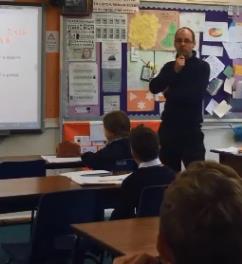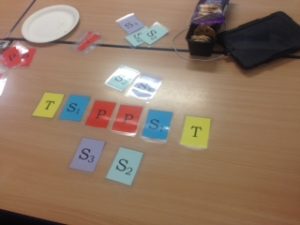One of a series of blogs on ‘building and sustaining active research collaborations with teachers of mathematics’
Written by Jenni Ingram and Nick Andrews:
Collaborative research within education is both rewarding and complex. The Talk in Mathematics project involved two groups of maths teachers and some colleagues at the university working together on developing students’ talk in lessons. In this blog post we explore the way the collaboration worked, how and why this collaboration evolved and adapted in many unanticipated ways as the roles of the different participants and their respective expertise were negotiated.
As researchers, our aim from the start was that there would be no expertise that was valued over another and no role that was emphasised over another. All those involved are teaching or have taught mathematics in comprehensive schools; have worked on developing other teachers’ practices, both experienced teachers and beginning teachers; have conducted classroom-based research, and have worked in research teams. The divide between teacher and researcher is not in any way clear. Each member of the group draws upon different experiences of teaching and learning and the vision was these differences would strengthen and enable practice to develop further, and it has!
We met several times a year to share video clips of teaching and explore issues that arose in teaching that related to developing students’ language use. The motivations for attending these meetings were multifaceted. Some are involved because they want to improve students’ mathematical discourse, some are involved because they feel they ought to be, some are looking for ‘expert’ input, some are looking for new ideas, some are there because it is part of their performance management targets, some are there to collect data for research. Whilst all of these motivations enable the goals of the project to be achieved, there is a need to balance these different motivations in how we work together.

Teachers know their students and their experiences of learning mathematics and this expertise is vital in any collaborative research. Teachers are also taking risks whenever they alter their practice and can often understand some of the more subtle differences that result from any change that can be missed by others. Teachers are also balancing many different demands which they need to consider when collaborating in research. All of these aspects can make the research stronger, and the results more meaningful to teachers, surely key priorities for any research with teachers.
When we met one or two teachers chose a short clip (2-3 mins) from a video of their own teaching that they had recorded themselves that contained something that interested them. Sometimes this was something they had deliberately changed about their practice that they wanted to explore further. Sometimes it was something problematic that they wanted to work on and find ways to adapt their practice. The teacher would show the clip and then describe what they noticed and what interested them. The clip was then watched and re-watched and discussed as a group, where we noticed things we had not noticed before and explored variations and possibilities that could be explored in practice.
Within these meetings there was some negotiation of roles. Some teachers were actively seeking advice about what to do, positioning themselves as someone who was learning how to teach and positioning others as having the answers. Other teachers focused on sharing aspects of their practice that they saw as ‘good’ teaching or asking questions that might prompt reflection. The aim of the group was not to give advice or make judgements but to explore possibilities and decisions that could be made.

The focus for the meeting was often set by the person sharing a clip and this was sometimes shared in advance. But at other times the focus arose from the discussions, particularly when something was noticed that interested the group but was not what had motivated the choice of the clip. One of the researchers would use this focus to devise a prompt or task following the discussion about the clip to shift attention to each teacher thinking about their own teaching and opportunities and possibilities to develop their practice further. Again, this task rested on the different sources of expertise in the group to explore these opportunities and possibilities.
The nature of the collaboration in this project is underpinned by our values as researchers. We saw teachers as being the experts in teaching, having the knowledge and understanding of their own practice and of their own students. Our role as researchers was to provide opportunities, prompts, and time for these teachers to work together on changing their practice. The use of self-video and the regular meetings can be viewed as an intervention but the changes that arose in the classroom resulted from the decisions that the teachers themselves made. This way of working enabled a certain authenticity to how research findings can be put into practice in classrooms. We did not explicitly share research findings at any point, but the teachers made suggestions and reached conclusions that resonate with the research into classroom interaction but also enabled us all to explore different practices in more depth and with more nuance than can be done through the reading of research findings.
Jenni Ingram works at the University of Oxford, Department of Education:
@IngramJenni; jenni.ingram@education.ox.ac.uk
Nick Andrews works at the University of Oxford, Department of Education:
Nicholas.Andrews@education.ox.ac.uk
